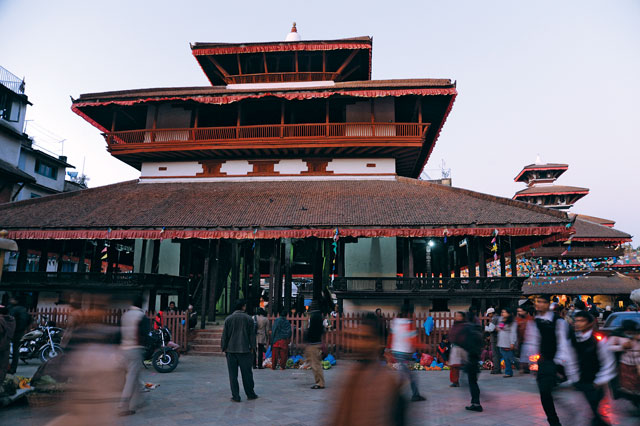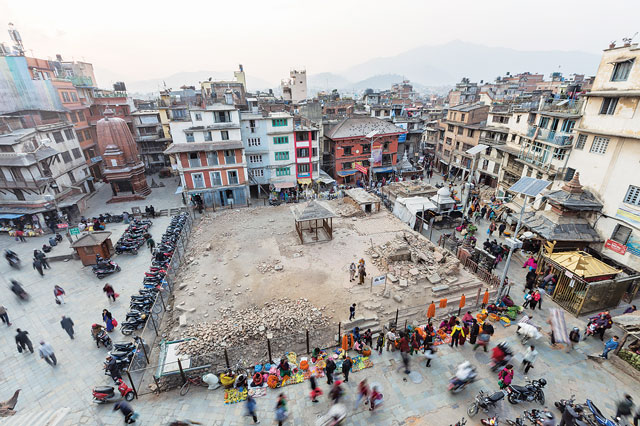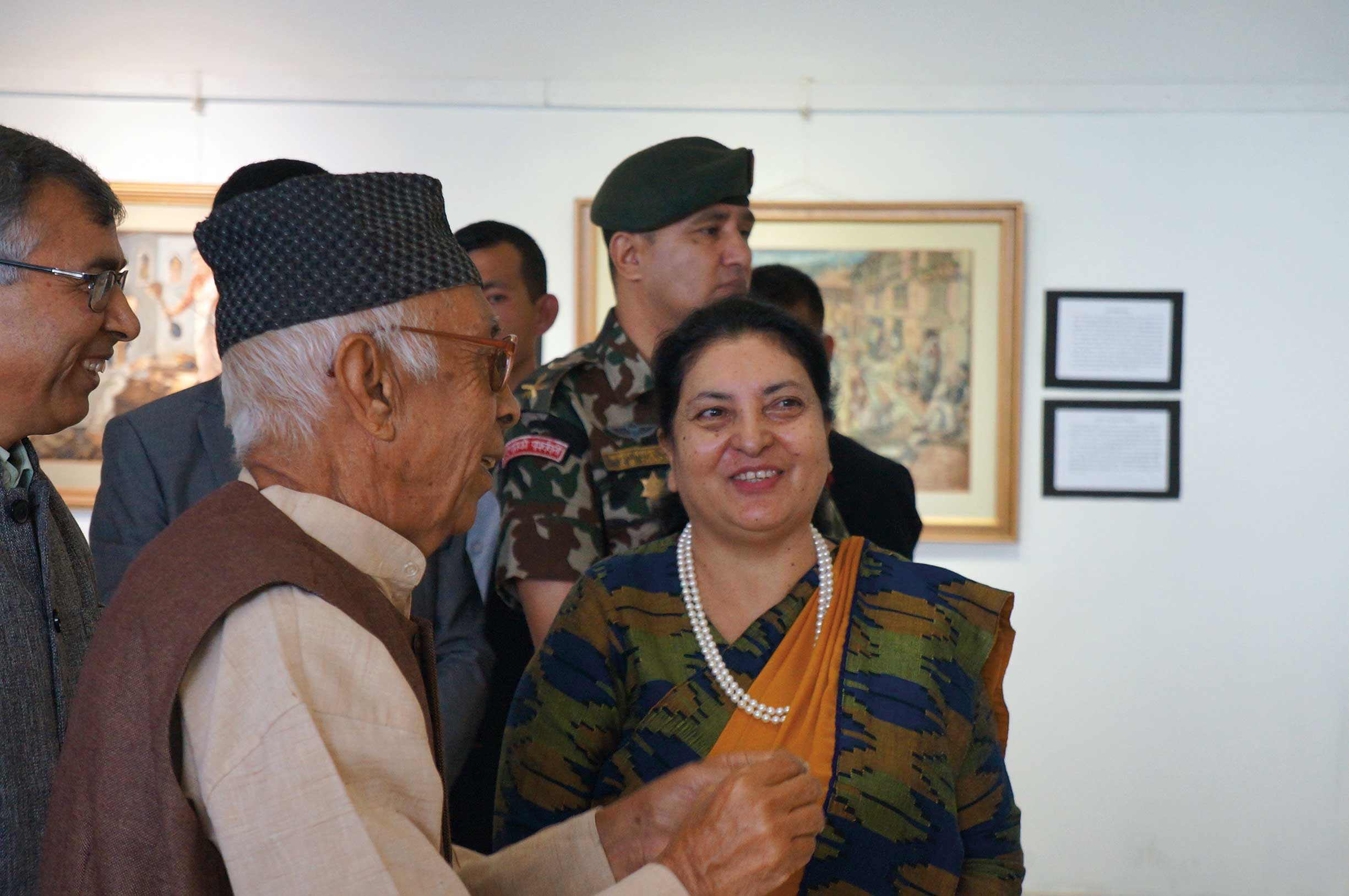A landmark with a glorious history; it was reduced to rubble during the 2015 earthquake; however, determined efforts are on to rebuild it to its original glory.
 When Kasthamandap collapsed during the April 2015 earthquake, a legend of Kathmandu, an iconic piece of history of our majestic old city, came crashing down. Unfortunately, much of the focus of rebuilding heritage sites damaged or destroyed during the earthquake has been elsewhere. Kasthamandap, like Basantapur Durbar Square just around the corner, has been put aside in the plans for reconstruction.
When Kasthamandap collapsed during the April 2015 earthquake, a legend of Kathmandu, an iconic piece of history of our majestic old city, came crashing down. Unfortunately, much of the focus of rebuilding heritage sites damaged or destroyed during the earthquake has been elsewhere. Kasthamandap, like Basantapur Durbar Square just around the corner, has been put aside in the plans for reconstruction.
 Kasthamandap is not only important in terms of Kathmandu’s history, but also has a special bond with generations Kathmandu denizens. Around 900 years old, it is believed to have been built as a rest house for traders, and as a site where public announcements were made. The name of the city of Kathmandu was derived from Kasthamandap. Even during the time of the earthquake, Kasthamandap was being used for a noble cause. Nimbus Savings and Credit Cooperative had been conducting a blood donation program, when the earth shook and brought the building crashing down on 10 employees and other volunteer donors.
Kasthamandap is not only important in terms of Kathmandu’s history, but also has a special bond with generations Kathmandu denizens. Around 900 years old, it is believed to have been built as a rest house for traders, and as a site where public announcements were made. The name of the city of Kathmandu was derived from Kasthamandap. Even during the time of the earthquake, Kasthamandap was being used for a noble cause. Nimbus Savings and Credit Cooperative had been conducting a blood donation program, when the earth shook and brought the building crashing down on 10 employees and other volunteer donors.
 Kasthamandap is unique in many aspects. The word, ‘Kasthamandap,’ literally means a wooden shelter, or pavilion. The core wooden structure is believed to have been with made from the bark of a single tree. Architects and experts believe this wooden structure dates back to at least A.D. 1,143. Unfortunately, due to the many renovations, most notably during the rule of King Laxmi Narsingh Malla, Kasthamandap is wrongly believed to be much younger than it actually is. Also known as Maru Sattal, local residents and travelers used Kasthamandap as a pavilion to rest, and also as a temple. Depictions of Kasthamandap have been found in paintings and manuscripts. The paintings show people enjoying views of Basantapur Durbar Square, and in those times, probably the entire valley, from the balconies of Kasthamandap.
Kasthamandap is unique in many aspects. The word, ‘Kasthamandap,’ literally means a wooden shelter, or pavilion. The core wooden structure is believed to have been with made from the bark of a single tree. Architects and experts believe this wooden structure dates back to at least A.D. 1,143. Unfortunately, due to the many renovations, most notably during the rule of King Laxmi Narsingh Malla, Kasthamandap is wrongly believed to be much younger than it actually is. Also known as Maru Sattal, local residents and travelers used Kasthamandap as a pavilion to rest, and also as a temple. Depictions of Kasthamandap have been found in paintings and manuscripts. The paintings show people enjoying views of Basantapur Durbar Square, and in those times, probably the entire valley, from the balconies of Kasthamandap.
The most significant ritual related with Kasthamandap are the funeral processions organized by family members of the deceased during Indra Jatra. The processions start from Maru Chowk, where the beautiful Kasthamandap once stood, go through the narrow streets and alleys to Asan, and ends back at Kasthamandap. This procession reenacts Goddess Dagin’s search for her son, Indra. This ritual, and the festival of Indra Jatra, were started by King Gunakamadeva to commemorate the founding of the city of Kathmandu.
Another well-known aspect of Kasthamandap among Kathmandu residents is about how it had survived numerous major earthquakes. Experts have varying reasons for the failure of Kasthamandap to endure the earthquake of April 2015. Excavations have found that the base of one of the four original wooden pillars had been adjusted, possibly in the course of its several renovations. Architects believe that if the original base of the wooden pillars had not been disturbed, Kasthamandap would have survived the earthquake. Excavations have also found that the architectural brilliance was such that much of the original structure of Kasthamandap has not been damaged, and experts conclude that at least 70% of the material can be reused for reconstruction.
It is also very fortunate that much of the remains of the artifacts and treasures were recovered from the remains of Kasthamandap. The four Binayak representations of Lord Ganesh, namely, Karya Binayak, Jal Binayak, Surya Binayak, and Ashok Binayak, along with the statue of Gorakhshyanath and the clay mask and pit of Bhairav have all been safely stored until Kasthamandap is reconstructed. These representations of Lord Ganesh were initially installed to make it easier for Kathmandu residents to conduct prayers and rituals at one location, instead of having to visit different temples all over the valley.
With the strong attachment of residents, especially families residing in Kathmandu for centuries, people around the valley are willing to take upon themselves the initiative to rebuild Kasthamandap. There are wood experts in the Newar community whose families work in specialized areas, such as identification of the most appropriate wood, growing the tree to make the wood most suitable for use in structures, and cutting and carving the wood for building. These experts have analyzed and discussed the possibilities of Kasthamandap proudly dominating Maru Tole again.
Construction costs to rebuild Kasthamandap in the original manner are also predicted to be very low, with much of the original material reusable, and due to the nature of the materials to be used. These plans would ensure success in rebuilding Kasthamandap to its original beautiful state, and also ensure that it is earthquake resistant. However, reconstruction cannot be initiated without the permission of the office of Kathmandu Metropolitan City. Until then, the residents of Kathmandu, or at least those passionate about preserving the city’s history, will keenly wait for Kasthamandap to be rebuilt back to its original glory.











